I have a pretty sweet gig.
I maintain two full-time jobs.
My medical clinic feeds my family, while my writing gig keeps my toy addiction stoked.
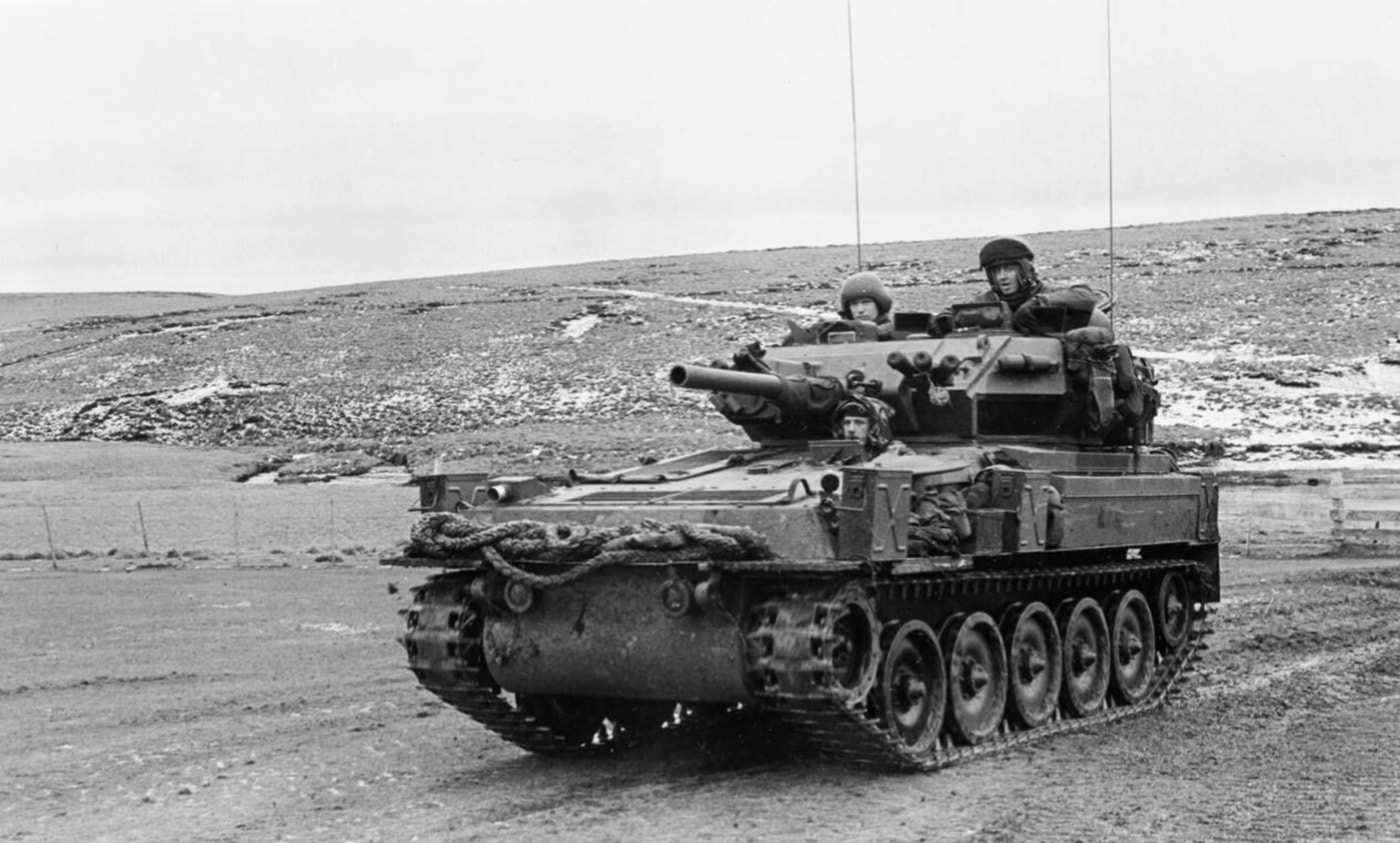
A FV101 Scorpion light tank of the Blues and Royals during the Falklands War. With its light footprint, the Scorpion was one of the few British vehicles capable of operating in the rough terrain. Image: IWM
If I spend my writing money on stuff I write about that also substantially decreases my tax burden.
So it was when I tripped over a fully restored British Scorpion light tank for sale in Virginia.
I coveted that bad boy in ways that flirted with unseemly.
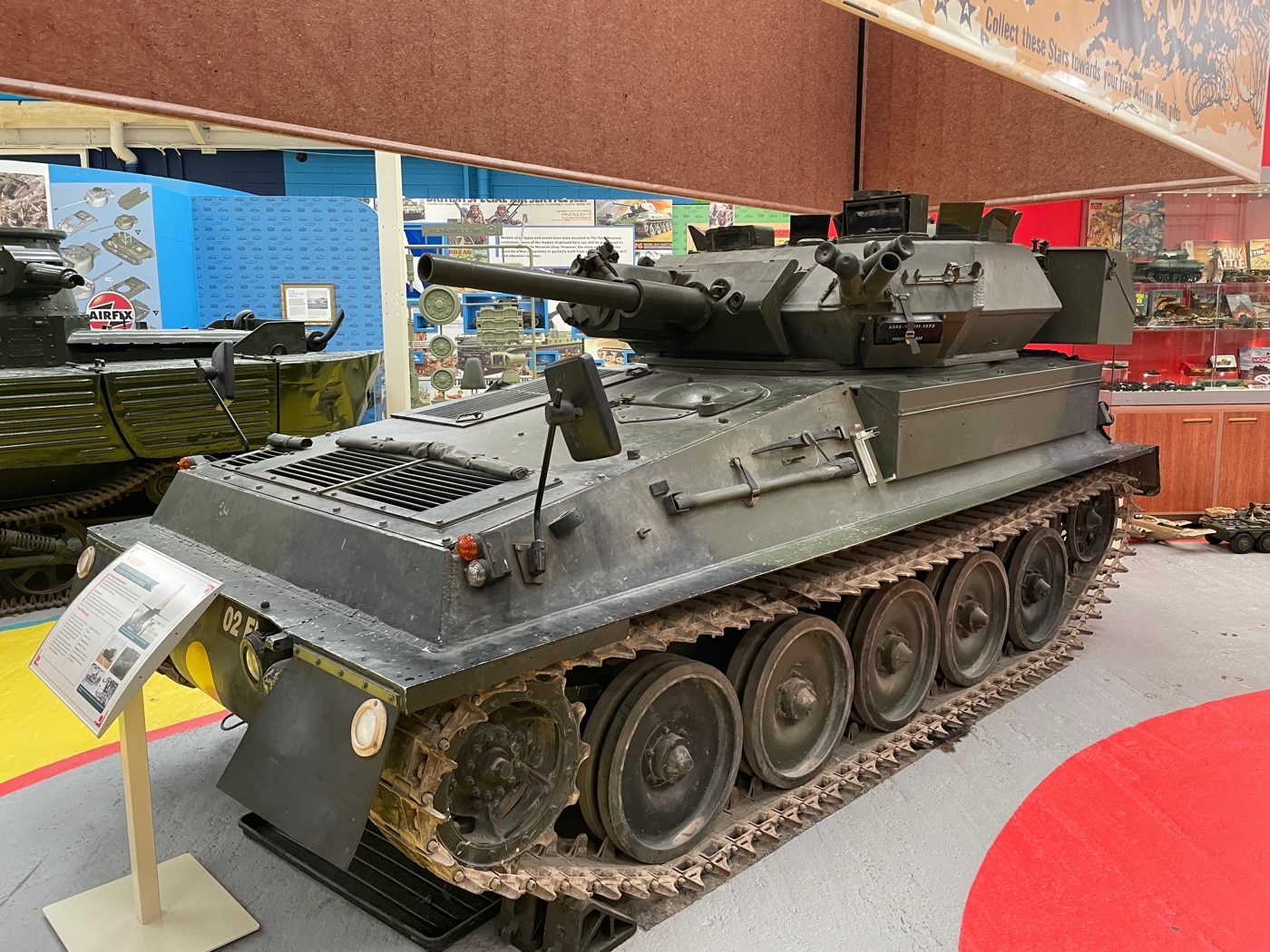
The British Scorpion light tank are relatively common in private hands in the United Kingdom. This one is at The Tank Museum. Image: Author
And So My Scorpion Dream Dies…
I live on a modest rural farm and have the space to exercise it.
I scraped up the cash and found a buddy with a low-boy trailer hed loan me for the pickup.

A Scorpion crew in the Irish Army fires the vehicle’s main gun during training in the Glen of Imaal. Image: Irish Defence Forces
She shut that right down.
Despite my most charming and vociferous efforts, there was no dissuading her.
I moped around a bit, but it was likely all for the best.
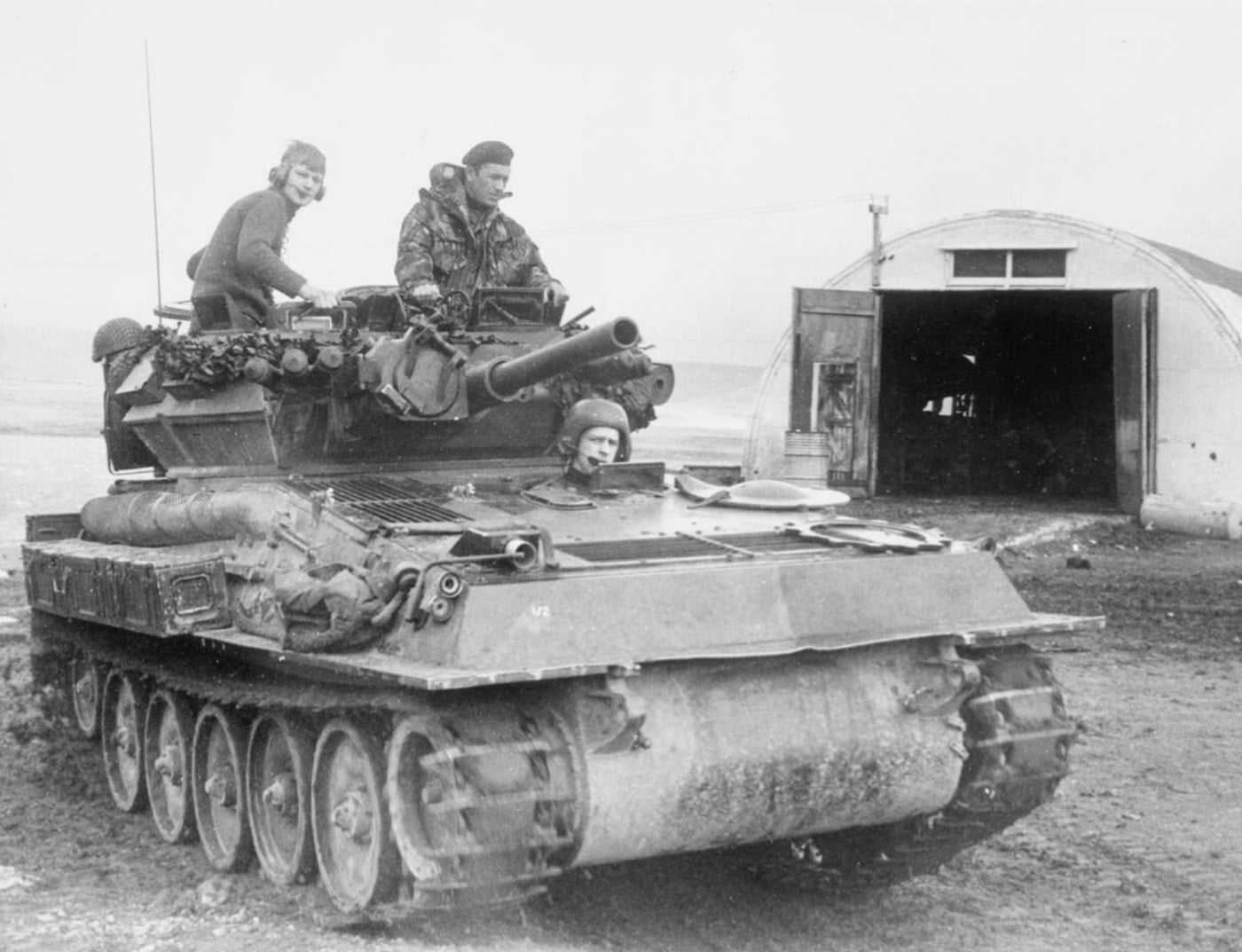
A Scorpion light tank of the Blues and Royals setting off on patrol near San Carlos. A young Falkland Islander rides in the turret, probably to provide the crew with local knowledge. Image: IWM
Keeping a vintage 1979 Jaguar Xj12 sedan humming along sounds hard.
Regardless, thus died my dream of owning a real tank.
The clan was known as the CVR(T) or Combat Vehicle Reconnaissance (Tracked).
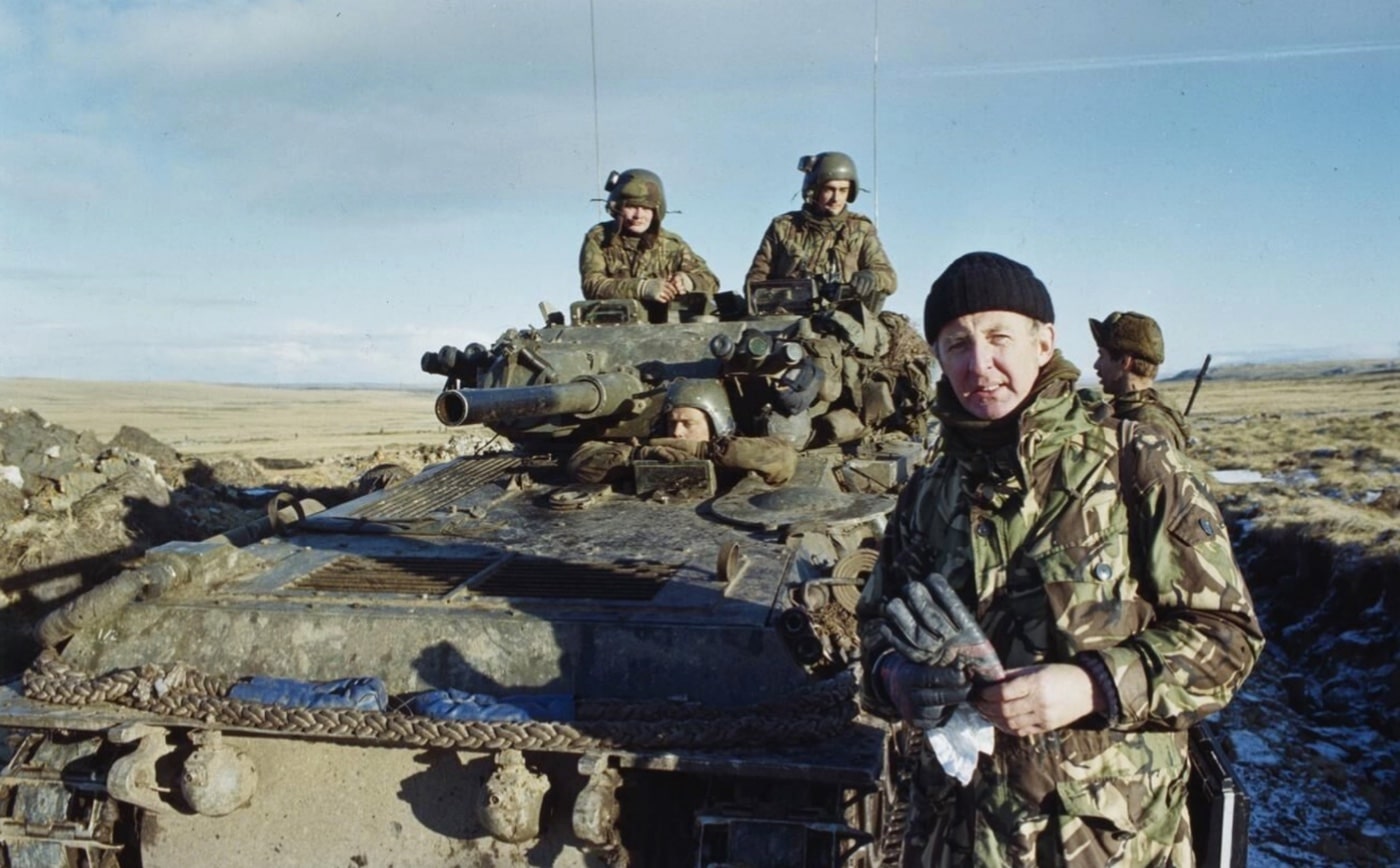
Civilian journalist Michael Nicholson of ITN stands near a British Scorpion light tank during the Falklands War. Image: IWM
These vehicles used a great many common components for ease of maintenance.
The total production run was around 3,000 Scorpion vehicles.
The Scorpion was introduced in 1973 and withdrawn from service with the British Army in 1994.
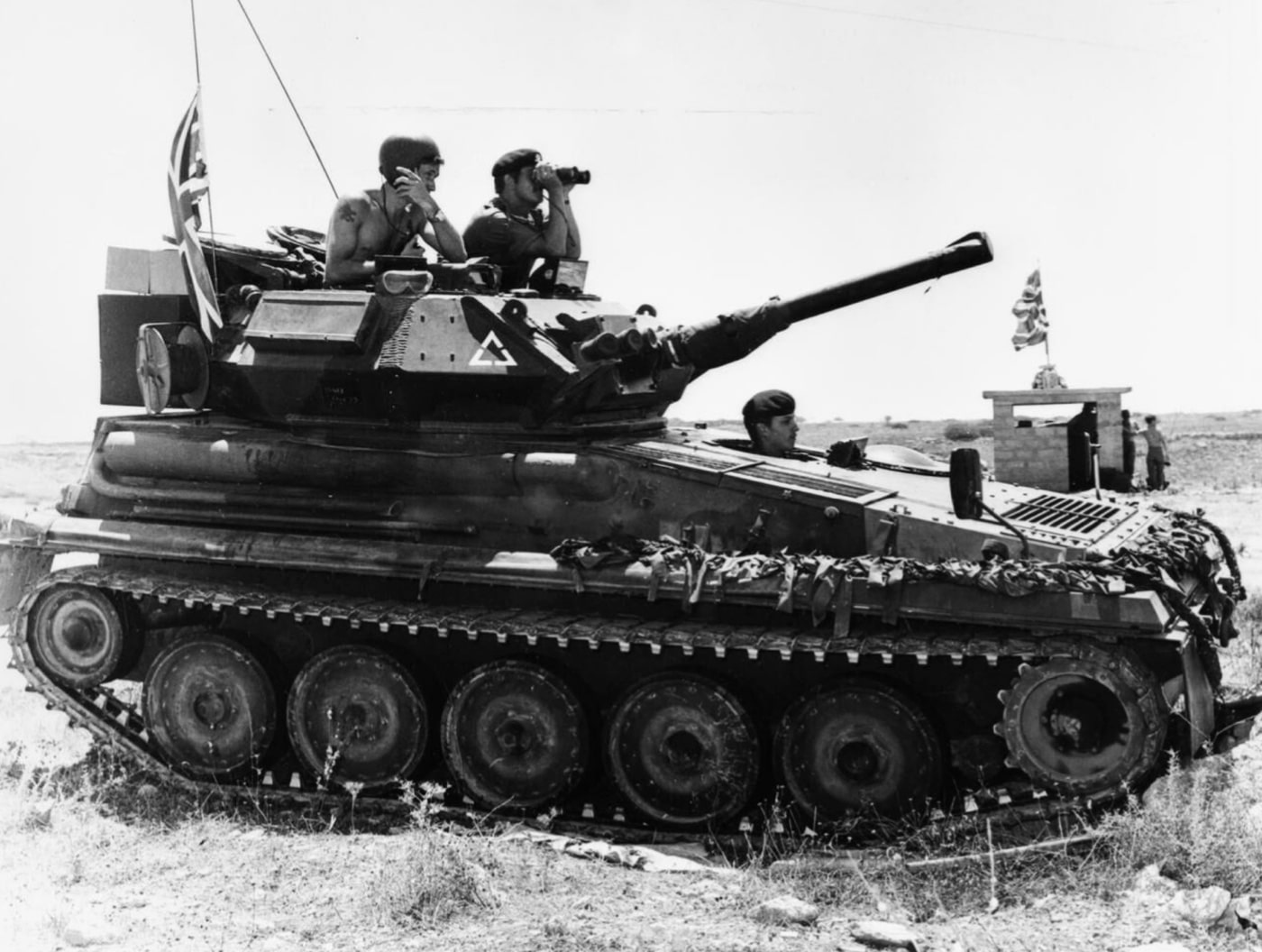
A Scorpion light tank of the 16/5th The Queen’s Royal Lancers takes up position during the Turkish invasion of Cyprus. Image: IWM
The Scorpions relatively light weight made it air transportable.
Two Scorpions could be safely moved inside a single C130 Hercules.
Its modest dimensions and availability make it one of the most desirable true tanks among hard-core modern militaria collectors.
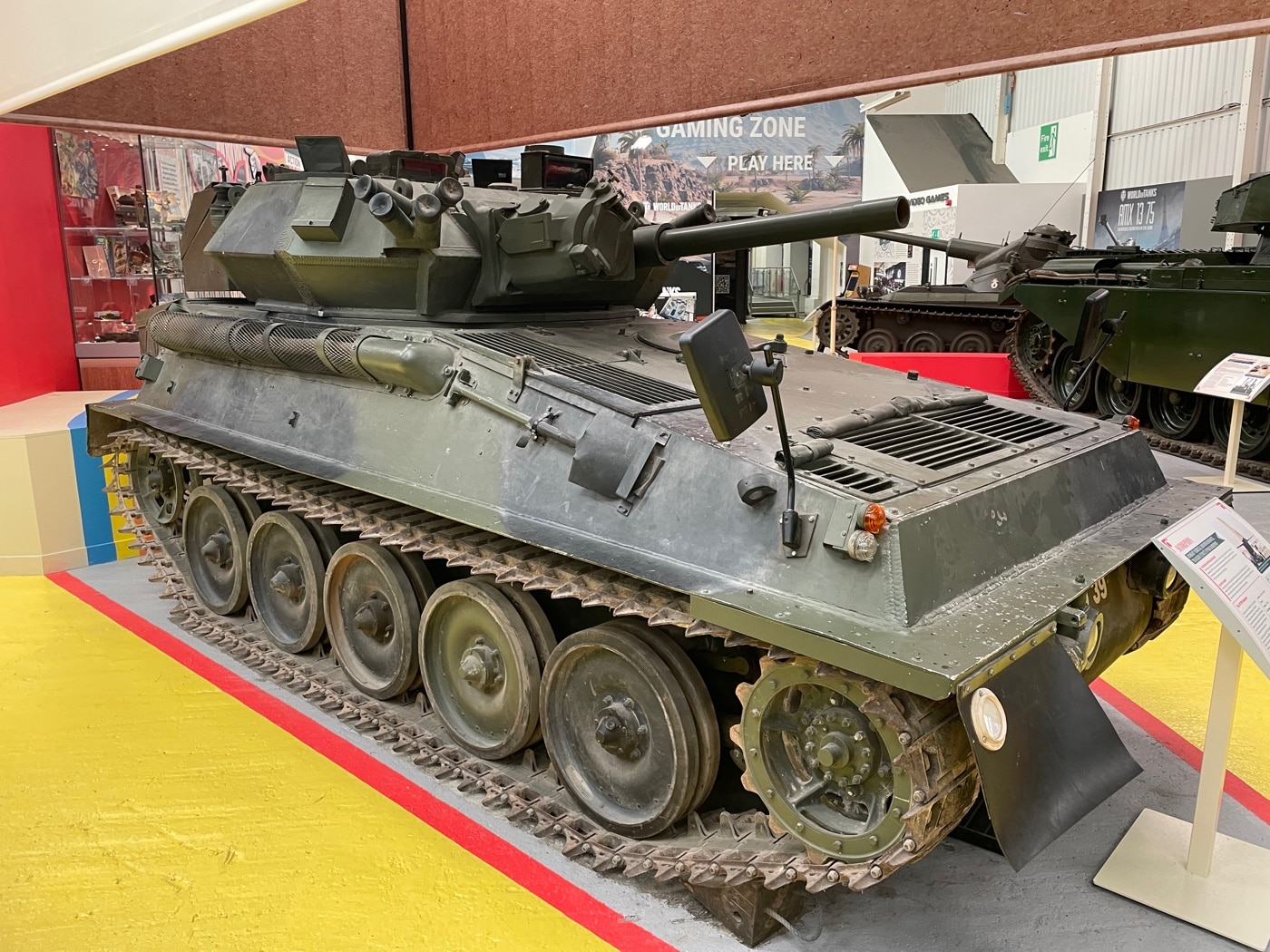
The FV101 Scorpion light tank had a hand crank turret that was equipped with smoke grenade launchers and night vision equipment. Image: Author
Details
The Scorpion was originally powered by a Jaguar J60 Mk 100b 4.2-liter petrol engine.
Many of these original engines were later replaced with either Perkins or Cummins diesels.
When equipped with flotation screens, the Scorpion could traverse water obstacles.
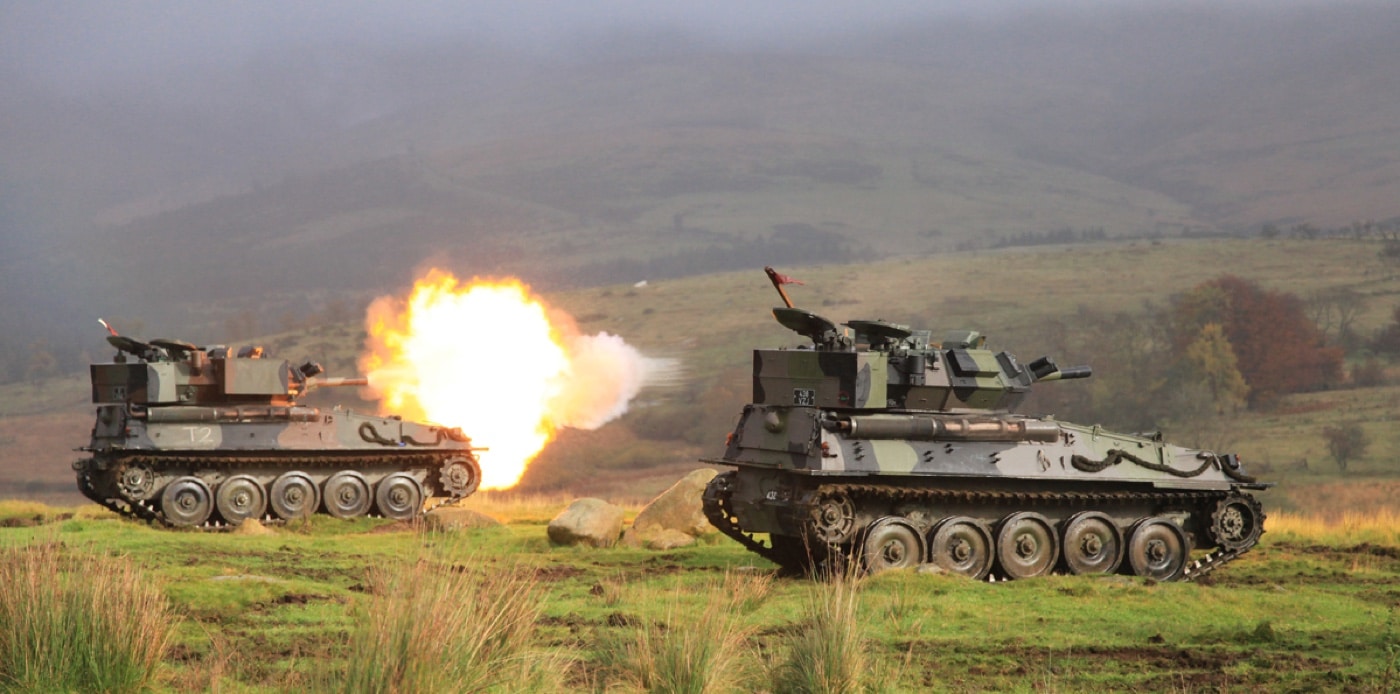
Although the Scorpion could not go toe-to-toe with a main battle tank, they offered reasonable protection to the crews supporting infantry assaults or conducting recon. Image: Irish Defence Forces
Maximum water speed was 3.6 mph.
Two of the three crewmen were stationed in the turret to manage the Scorpions weapon systems.
Primary armament was a 76mm low-velocity L23A1 gun.
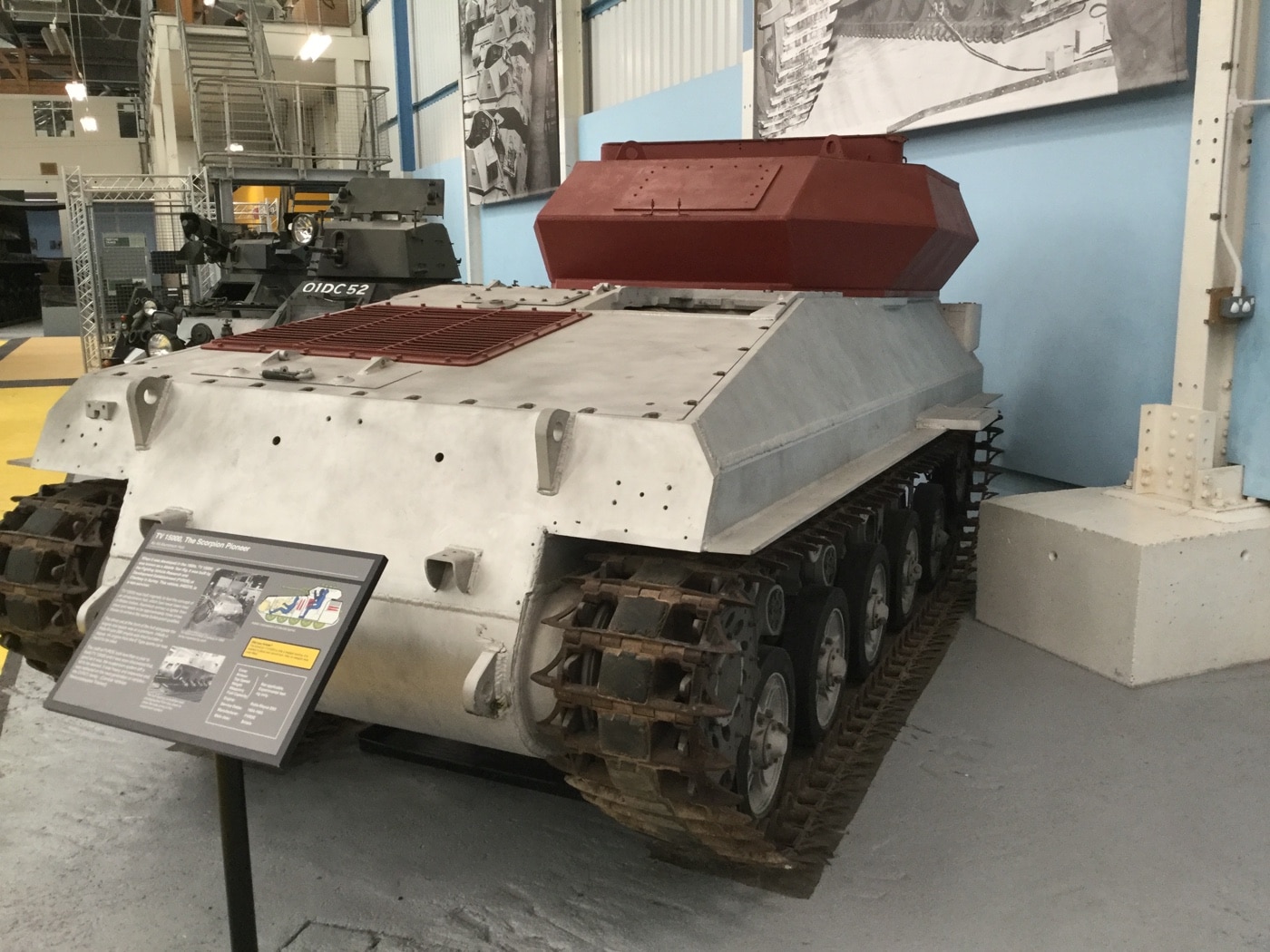
This is the prototype of the aluminum-hulled FV101 Scorpion on display at the Tank Museum in Bovington, England. Image: Author
There was stowage for around 40 rounds.
A second MAG could be mounted externally on a pintle mount.
Curiously, the Scorpion turret was hand-cranked.
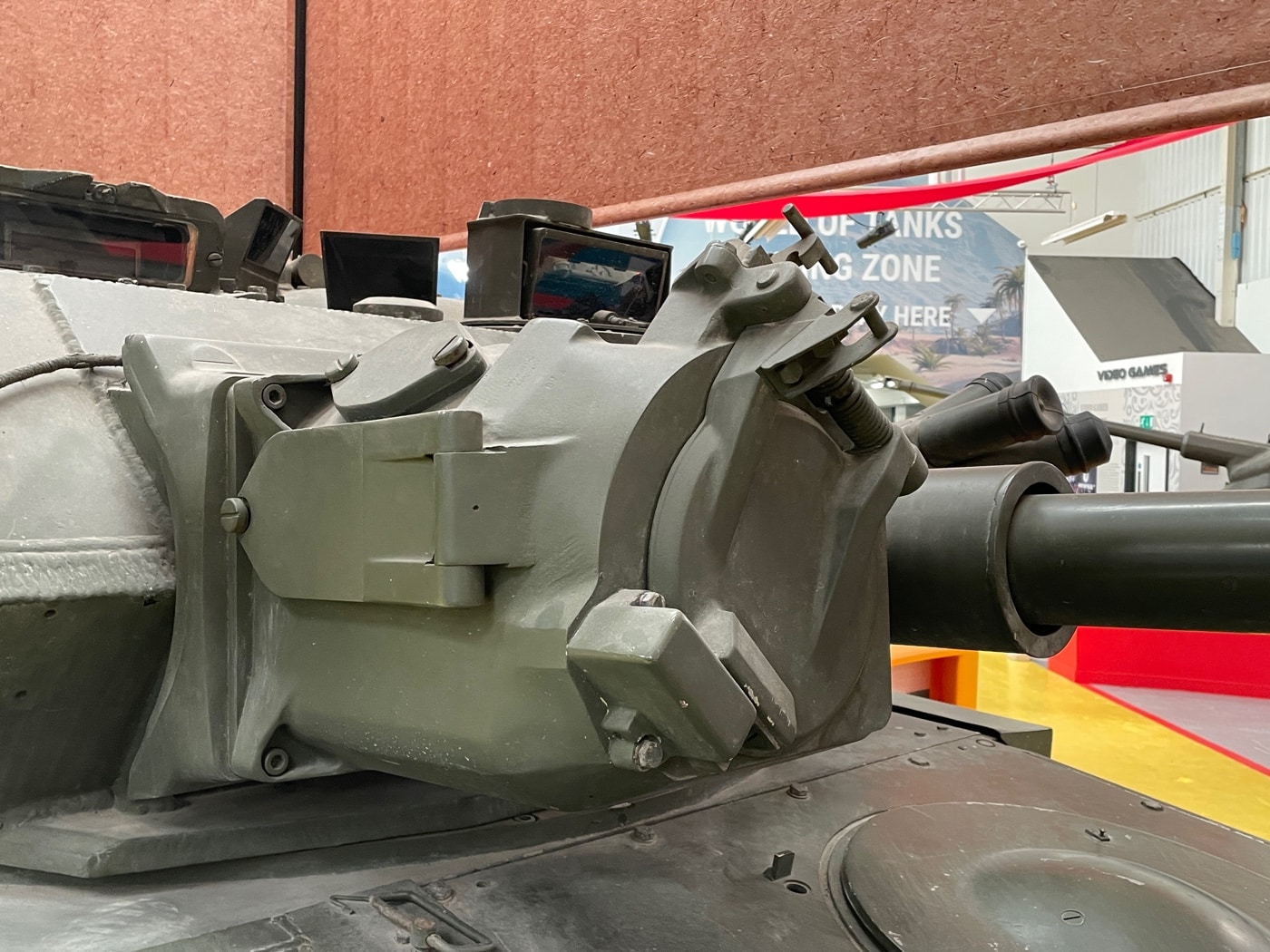
The FV101 Scorpion had a built-in night vision targeting system. Although cramped, the vehicle offered better visibility than most vehicles in its class. Image: Author
This made fluid engagements fairly laborious but optimized both interior space and production cost.
The interior of the Scorpion was notoriously cramped.
The drivers position in particular required a bit of contortion to get into and out of.
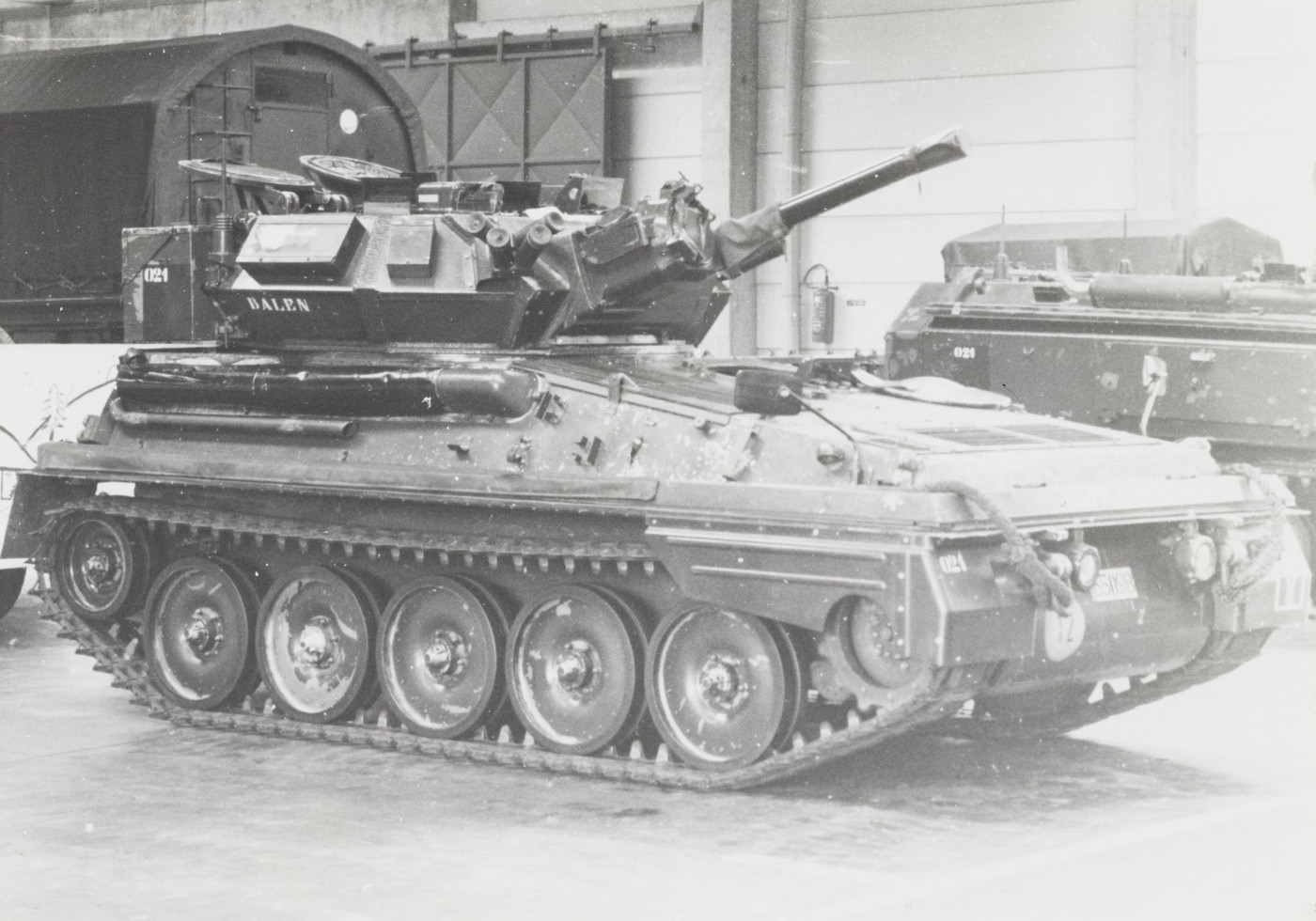
A Scorpion tank of the Belgian armoured infantry brigade “Bevrijding” during NATO maneuvers. Image: Royal Netherlands Army
Like the workhorseAmerican M113 armored personnel carrier, the Scorpion employed aluminum armor to help save weight.
Given the sloped nature of the design, this provided an average of around 25mm of aluminum armor protection.
This was proof against 7.62mm rounds from all aspects and 14.5mm projectiles along the vehicles frontal arc.
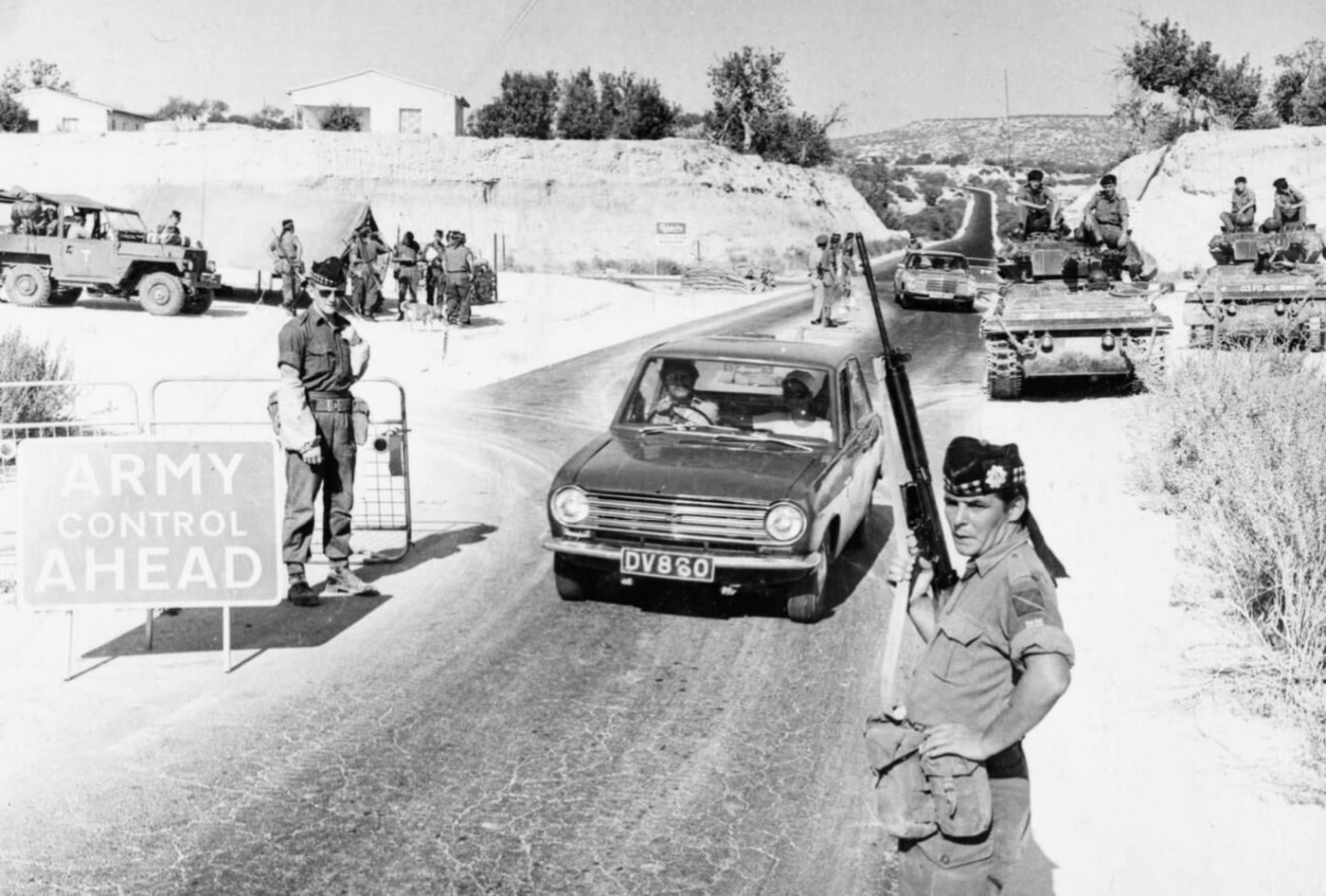
FV101 Scorpions provide additional security with the Royal Scots at a checkpoint at the Western Sovereign Base Areas of Akrotiri and Dhekelia on Cyprus. Image: IWM
NBC protection and a built-in image intensifier night optics system enhanced the Scorpions capabilities.
Being that it was a British vehicle, it even had a built-in tea kettle and a toilet.
Combat Use
The Scorpion was used extensively by British forces and was also widely exported.
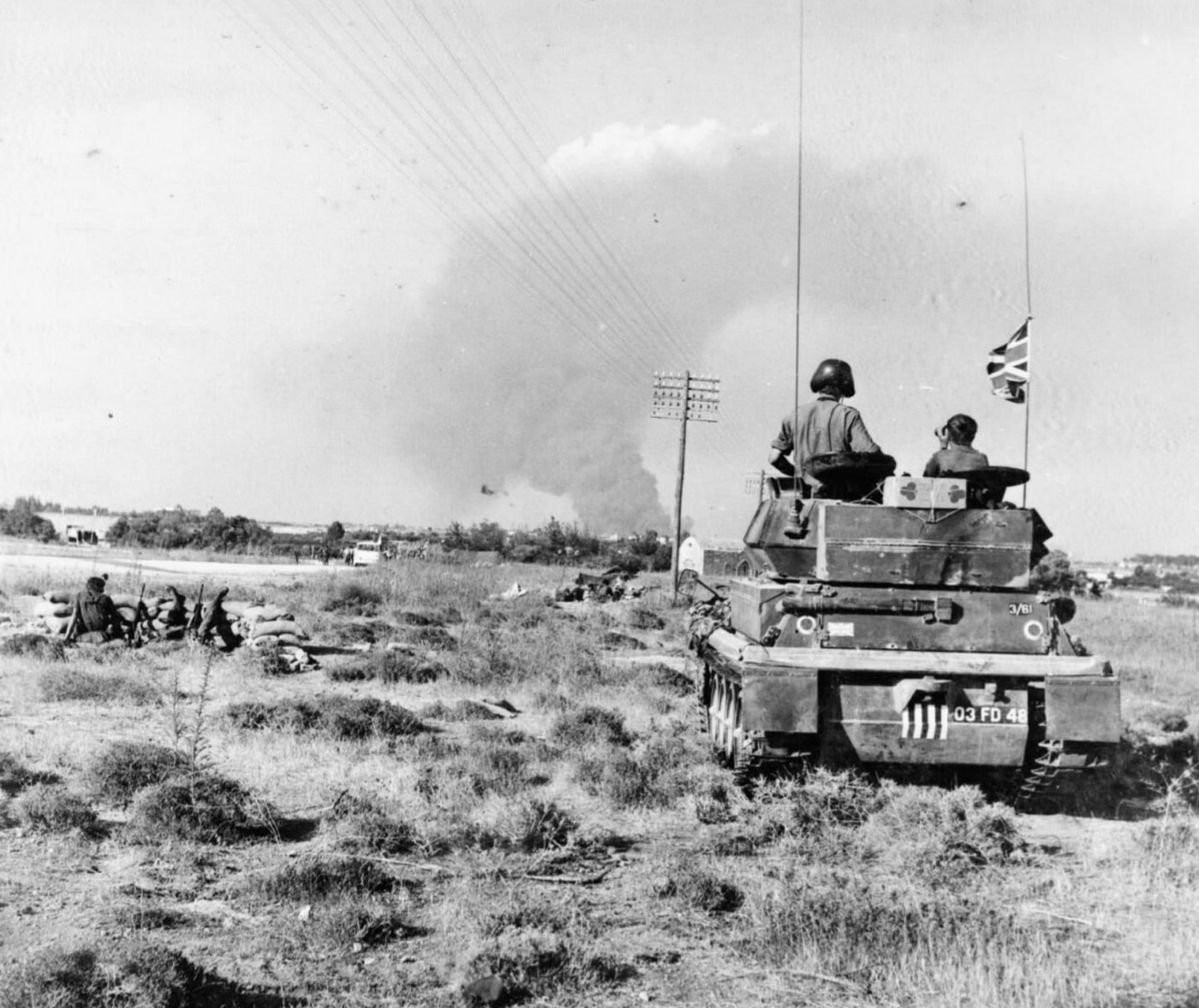
During the Turkish Invasion of Cyprus in 1974, these British Army troops are augmented by a FV101 Scorpion tank near Ayios Nikolaos. Smoke rises from Turkish bombings in Famagusta. Image: IWM
The Iranians bought 250 copies in the 1970s.
Many of them are still wheezing along in Iranian guise even today.
The Scorpion also saw fairly widespread combat action in Iranian hands during the Iran-Iraq War.
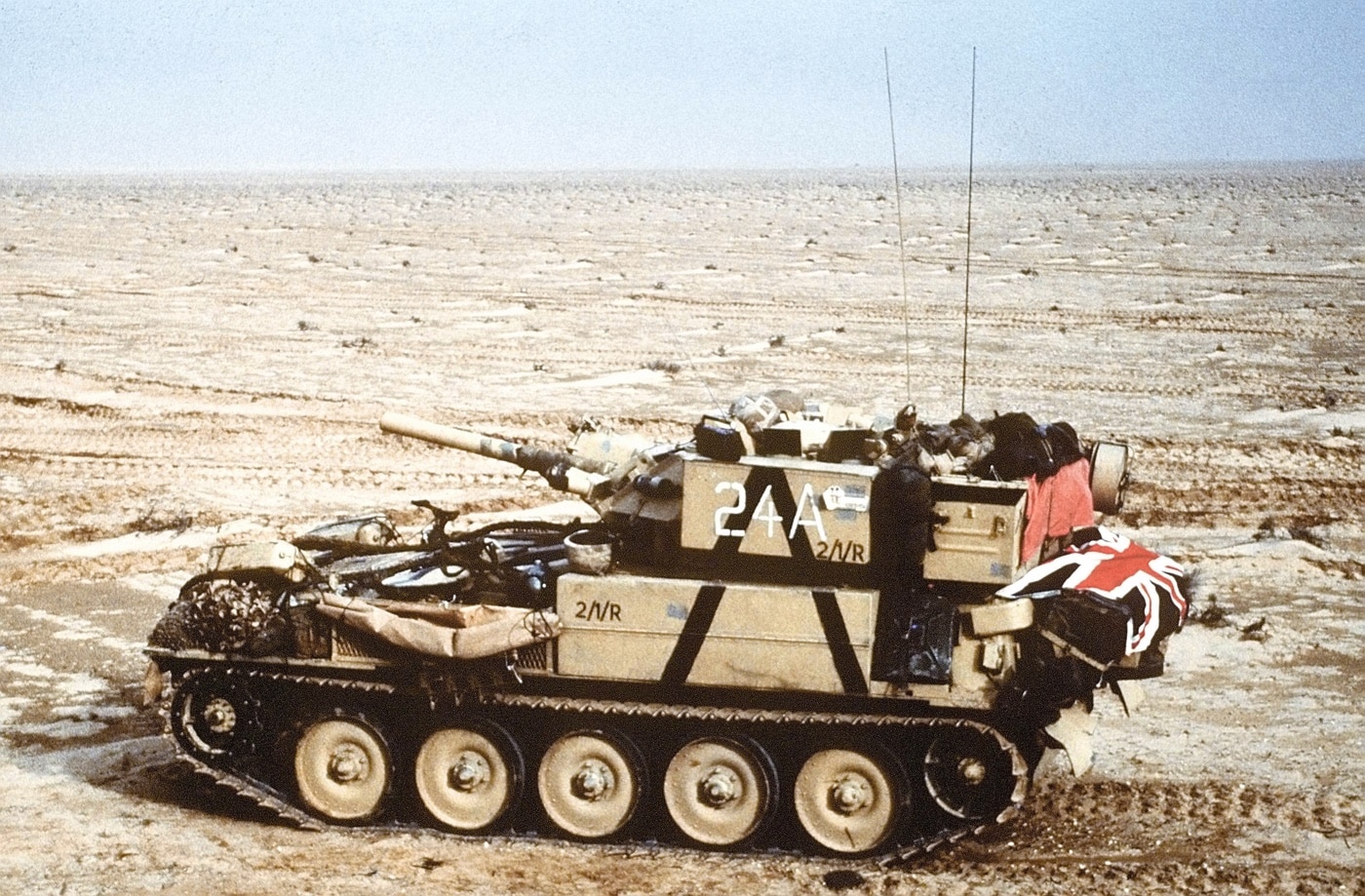
A Scorpion reconnaissance vehicle of the 7th Brigade Royal Scots, 1st United Kingdom Armored Division, advances east into Kuwait from southern Iraq during Operation Desert Storm. Image: DoD
For its intended mission, the Scorpion was superb.
However, the Scorpion never was a true main battle tank.
When faced with Centurions,T62s,T-72s, and the like, the Scorpion was fairly easy meat.
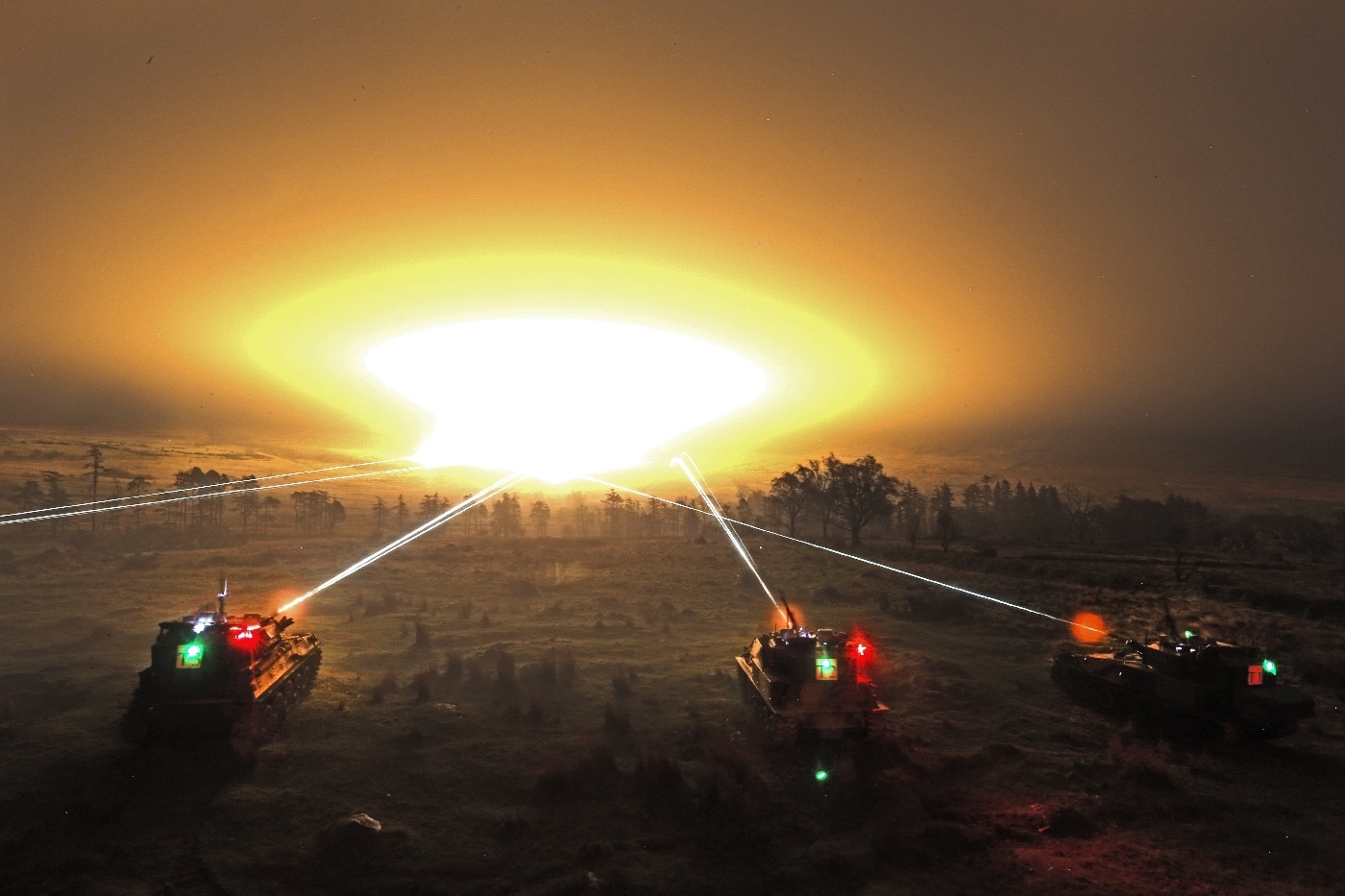
In this long exposure photograph, Irish Army Scorpion tanks engage a target during night training. Image: Irish Defence Forces
Tragically, I just didnt get to take it home when I was done.
Just typing these words makes me wish my own tank saga had gone a different direction.
If its possible for a war machine to be categorized as adorable, the FV101 Scorpion earns that moniker.
Fast, light, modular, and well-reasoned, the Scorpion was and is the ideal recreational tank.
In the modern era of drones and ubiquitous smart fire-and-forget anti-armor systems, the Scorpion would understandably struggle.
Tearing about the Mississippi countryside in that rascal would have been pretty freaking awesome.




